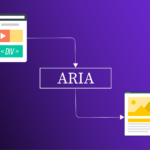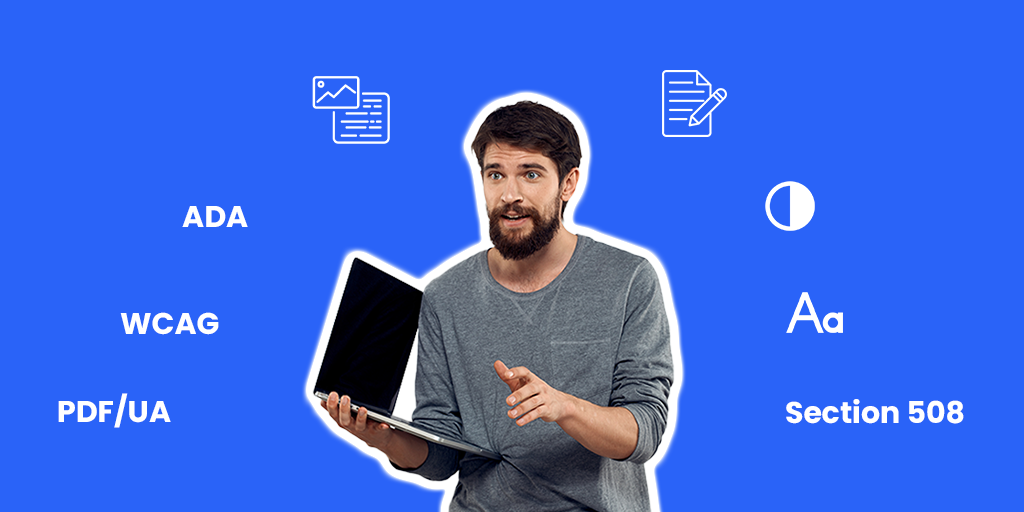As organizations increasingly prioritize digital accessibility, they are confronted with a critical decision – whether to rely on manual testing or automated testing. While automated tools offer speed and efficiency, they are not without their limitations. This article explores the limitations of automated accessibility testing and examines how integrating manual review can significantly improve the process of creating truly inclusive digital experiences.
Limitations of Automated Tools
Automated tools are adept at detecting technical problems such as missing tags or inappropriate heading structures. Nevertheless, they consistently fall short in human judgment and contextual areas. The following are some of the main limitations.
- Understanding Content: Automated tools find it difficult to comprehend the meaning and intention of content. They cannot recognize intricate layouts, data tables and charts, resulting in wrong tagging or failure to identify missing alternative text descriptions.
- Logical Flow: Most automated tools do not cover verifying information’s logical flow especially for non-linear documents. Manual review assures that a person with a screen reader can navigate the document intuitively.
- Semantic Accuracy: As much as automated tools may flag missing labels, they cannot ensure their accuracy. Manual review ensures that those labels accurately reflect what each of these elements do and what those elements contain.
The Power of Manual Review
A manual review provides a human perspective necessary for true accessibility to be realized. Evaluators get more insight into how a document will be used by engaging in manual reviews. For instance, medical billing statements require different considerations for accessibility than academic research papers would need. Therefore, evaluators may customize their assessments through manual inspection of content.
- User Simulation: Utilize assistive technologies like screen readers and keyboard navigation tools. This allows you to experience the document firsthand and identify any barriers to accessing information.
- Content Scrutiny: Carefully examine the content, focusing on complex layouts, data tables, and charts. Ensure these elements are properly tagged and described with clear, concise alternative text.
- Logical Flow Verification: Check the order in which elements are navigated using the keyboard and screen reader. Make sure that users can move through the document in a logical sequence and that the relationships between different elements are clear and understandable.
- Label Accuracy: Verify that all labels accurately reflect the content and function of the corresponding elements. This includes form fields, buttons, and other interactive components.
- Color Contrast Check: While automated tools are effective at assessing color contrast ratios between text and background, they can sometimes miss specific context-related issues. For instance, tools may not account for text overlaying images or patterns, where contrast can vary. Additionally, they might not accurately evaluate contrast in dynamic content or interactive elements like buttons and form fields. Therefore, manual review is essential to ensure all content is legible for users with visual impairments, especially in these complex scenarios.
- Testing accessibility with diverse user groups: While manual review is invaluable, consider the power of real-world testing. Partner with individuals with disabilities to navigate your PDF and identify any unforeseen obstacles. Their insights can be invaluable in refining your document for optimal accessibility.
Challenges Addressed by Manual Review
Manual review in PDF accessibility checks addresses several critical challenges that automated tools may overlook:
- Complex Layouts: Automated tools can struggle with interpreting complex layouts, such as multi-column documents or documents with overlapping elements. Manual review ensures that reading order and content hierarchy are properly defined for screen readers.
- Data Tables and Charts: Properly tagging data tables and describing charts with alternative text is crucial for users who rely on screen readers. Manual review ensures that these elements are not only accessible but also provide meaningful information.
- Dynamic Content: Interactive elements like forms, buttons, and multimedia content can pose challenges for automated tools. Manual inspection ensures that these elements are accessible and function as intended for users with disabilities.
- Color Contrast and Visual Elements: While automated tools assess color contrast between text and background, they may miss nuances such as text over images or gradients. Manual review verifies that all visual elements are perceivable and distinguishable by users with visual impairments.
Automated tools excel in repetitive tasks like detecting basic accessibility issues such as missing alt text or insufficient color contrast. However, they may struggle with complex layouts, dynamic content, and accurately interpreting context-specific challenges like images overlaying text. Manual review ensures thorough evaluation in these areas, providing human judgment to verify logical flow, assess interactive elements, and tailor accessibility measures to meet diverse user needs. For a comprehensive approach, solutions like documenta11y integrate both automated and manual checks, offering remediation that aligns with legal requirements such as ADA, AODA, Section 508, PDF/UA, and more.
documenta11y offers a user-friendly, self-serve platform accessible 24/7, with a flexible pay-as-you-go model. This makes it easy and affordable to ensure your PDFs and documents of other formats are not only compliant but also usable by everyone.

 5 Key Things to Look for When Choosing a PDF Accessibility Partner
5 Key Things to Look for When Choosing a PDF Accessibility Partner How Semantic Structure and Regions Improve Digital Accessibility
How Semantic Structure and Regions Improve Digital Accessibility Less ARIA, More Accessibility: Documenta11y's Guide to Cleaner Web Content
Less ARIA, More Accessibility: Documenta11y's Guide to Cleaner Web Content
